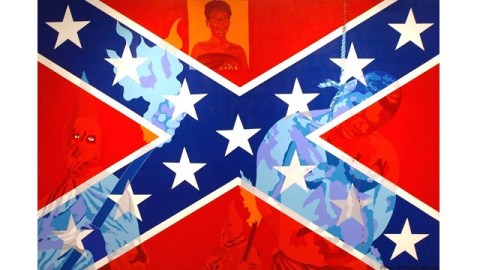Civil Action: The New Forgotten American War

For a country that created a special holiday just to remember those who have fought for our freedoms in war, we do a lot of forgetting the rest of the year. 2011 marks the sesquicentennial of the beginning of the American Civil War in 1861. As a recent article by Helen Stoilas and Javier Pes in The Art Newspaper points out,whereas the bicentennial of Abraham Lincoln’s birth in 2009 spawned a slew of special museum exhibitions across the country, this year’s special event has inspired not a single major exhibition in the United States for 2011. What does it say about the American psyche and, perhaps more importantly, how culture-shapers perceive that mindset that the Civil War remains a taboo topic? Are we still fighting that war on some level? What kind of civil action—or cultural civil action—will it take to end the Civil War so that we can remember it?
Ironically, Memorial Day began as a remembrance of the soldiers on both sides who fell in the “War Between the States.” First called “Decoration Day” because of the practice of decorating gravesites of war veterans, Memorial Day took on its modern moniker and official place in the calendar after World War I. Ever since, wars seem to vie continually for the dubious title of “The Forgotten War.” The Vietnam War and the Korean War battled for supremacy of irrelevancy in a struggle of the generations until more recent times, in which the Iraq War and Afghanistan War threaten to be forgotten even before they reach an end. World War II, the “Good War” fought by “The Greatest Generation,” stands safe from the mists of time. In the heady days back in 1990 when Ken Burns’ magnum opus reigned on PBS, the Civil War came back to vivid life and an almost painful perpetual afterlife on PBS fundraisers. Is it possible that the Civil War is now as deathly silent as the late Shelby Foote, the historian with the charming Southern drawl who came to embody the glory and the grief of the conflict?
As the article points out, some argue that 1861—when the Southern states seceded in succession like air leaking from a balloon, only to be followed by battles marked more by mismanagement and disorganization than glory—simply doesn’t have the same historical juice that later years offer. Another compelling argument centers on the belief that, outside of the art of Winslow Homer and the photography of Mathew Brady, little art of lasting value came out of the war years. (One of the few art exhibits this year connected to the Civil War, Romance in Conflict: N.C. Wyeth’s Civil War Paintingsat the Brandywine River Museum in Chadds Ford, PA [my review here], features art by N.C. Wyeth painted nearly half a century after the war ended.) One consolation is that the Smithsonian American Art Museum plans to open an exhibition titled The Civil War and American Art in November 2012 that may later go on to the Metropolitan Museum of Art in New York City.
What makes the silence of art museums on the memory of the Civil War more ominous for me is the recent story in Inside Higher Ed of the censorship of Stanley Bermudez’s painting Heritage (shown above) by Martha T. Nesbitt, president of Gainesville State College in Florida, where Bermudez works as an art instructor. Heritage shows the Confederate flag with images of the Ku Klux Klan and a lynching superimposed on the stars and bars. Bermudez cleared the controversial image with the curator of the campus show and a cropped version even appeared on the advertising for the exhibit, but the college president gave in to pressure from Southern heritage groups who besieged her office with complaints.
In such a climate where contemporary art cannot pose questions regarding the past and art of the period fails to fit the bill for a full examination, it seems almost impossible for any dialogue featuring visual art or any other medium to take place, let alone flourish. I’ve known people raised in the South who call the conflict “the War of Northern Aggression” with a straight face. The lingering power of the “Lost Cause” myth that spawned everything from the KKK to anti-Civil Rights sentiment in the 1950s and 1960s threatens to make attempts at looking closely at the Civil War through the prism of art a different kind of lost cause, unless someone or some group performs a civil action capable of opening the past to the inquiring present.




